Imagine another world that is inhospitable to human life. This world is filled with water and teems with creatures that look nothing like us. Some have multiple pairs of legs, others have no legs or eyes and others are transparent and ghost-like. It may sound alien, but this world is closer than you think. Streams, rivers and lakes across the world, including throughout Wyoming are bubbling with life just beneath the surface.
Earth is covered by 71 percent water, and 97 percent of that water is contained in oceans. Freshwater makes up only 0.01 percent of all the water on the planet. All lakes and rivers combined represent only 0.0072 percent of all water on Earth.
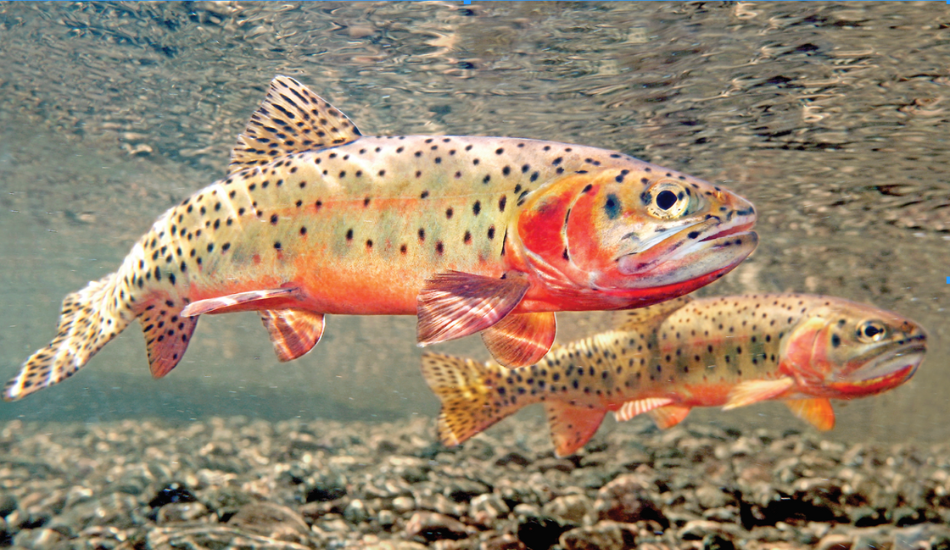
Freshwater may get the short end of the stick when it comes to abundance, but the ecosystems within these water bodies are incredibly biodiverse. As a headwater state where four major river systems begin, Wyoming has a variety of freshwater habitats ranging from tiny mountain streams where the water flows directly from melting snow to large reservoirs thousands of acres wide. The diversity of habitats contributes to the wide array of aquatic life that can be found across the state.
Wyoming is home to more than 70 species of fish. One species, cutthroat trout, is native to the Cowboy State and is an extremely popular species for anglers to target. In some cases, the only interaction someone might have had with a waterbody is to catch fish, or even to watch them rise to the water’s surface. But what else is going on in that stream from where that fish just emerged?
Though we may sometimes think of them as a singular entity and as separate from the rest of the ecosystem, cutthroat trout are one of many inhabitants that need to work in harmony for that system to exist. In the time they have been on the landscape, these fish have coevolved with other animals and plants. Without the influence of other aquatic life, freshwater ecosystems would collapse and trout would not be spared. Each organism has a part to play in the continuation of life underwater.
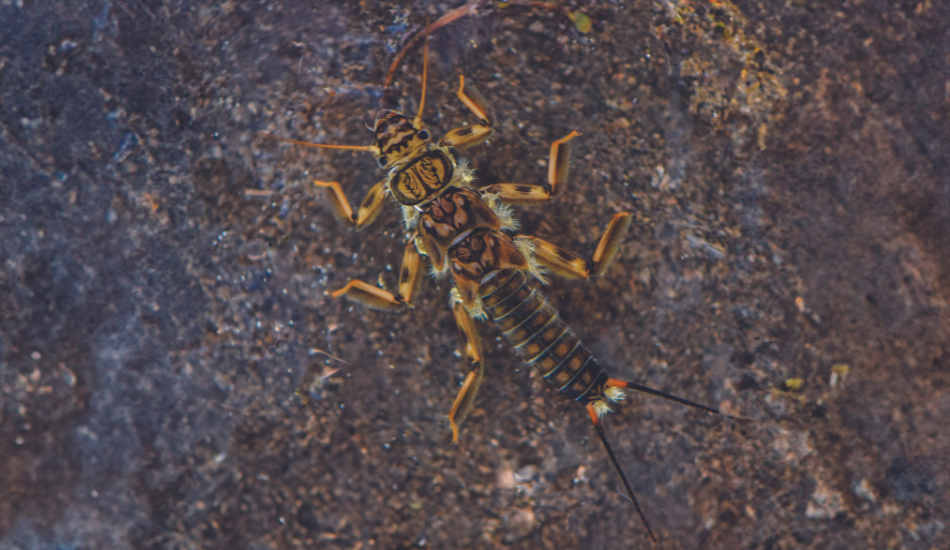
Insects
Insects are a mainstay of a cutthroat trout’s diet, particularly in rivers and streams. Whether a water-bound larva, an adult which has recently emerged or a fully terrestrial insect like a grasshopper that had the misfortune to fall into a waterbody, trout consume a variety of insects.
“Trout are pretty generalist. They’ll eat whatever is most available,” said Diana Miller, Wyoming Game and Fish Department fisheries biologist in the Jackson Region. “They’ll key into certain species if they’re more abundant. If there’s a lot of grasshoppers around, they’ll key into grasshoppers; if there’s a big hatch of caddisflies, they’ll key into caddisflies. They’re cyclical in what they’re selecting for, but it’s usually based on availability.”
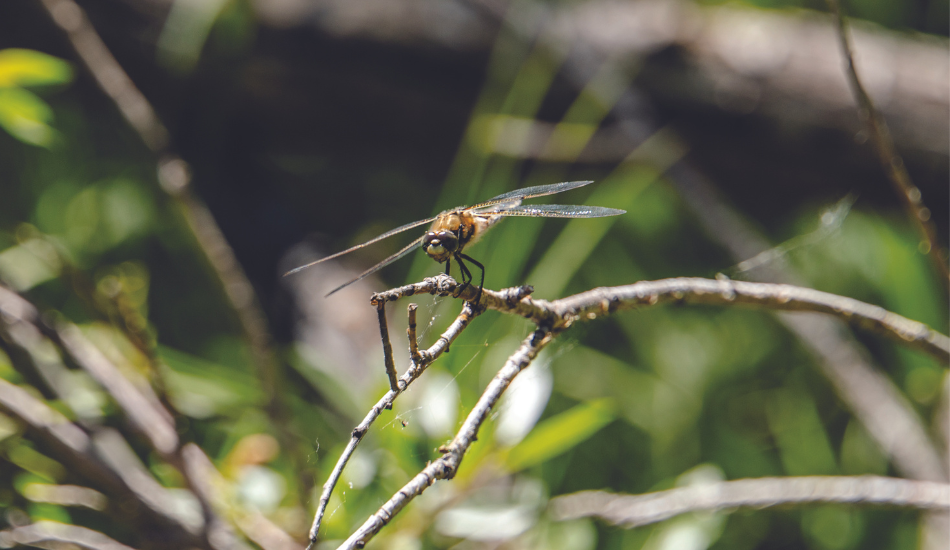
Insects also are major primary consumers, with many species consuming only plants. Several insects thought of as terrestrial species, including stoneflies, black flies, dragonflies and others, spend a significant portion of their life underwater. Not only do these species lay their eggs in water, their larvae are exclusively aquatic. They can spend months or years in this stage before metamorphosing and emerging as terrestrial adults, with only a brief part of their lives spent on land. Some mayfly species, for example, have evolved so their adult form does not feed, with reproduction being their only purpose. Of the many animals in freshwater ecosystems, as is true on land as well, insects are one of the largest factions.
Zooplankton
These are tiny animals floating through the water column. Though small, these animals constitute a large part of a cutthroat trout’s food, especially in lakes. As fish tend to target zooplankton, many zooplankton in lakes evolved with reduced pigmentation making them transparent and better able to hide from fish. Similar to aquatic insects, zooplankton species span the spectrum of herbivores, carnivores and omnivores. Many of these species are major consumers of microscopic plants called phytoplankton, utilizing plants’ energy to become delicious prey for trout, serving as a critical link in the ecosystem’s food web.
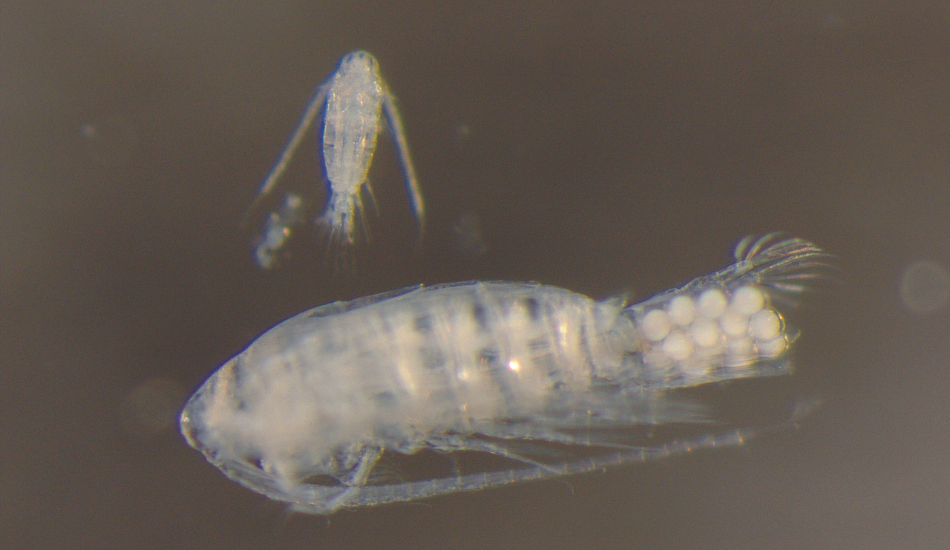
Crayfish
Four native species of crayfish populate the streams and lakes of Wyoming. Cutthroat trout occasionally prey upon small crayfish, but they are more affected by the wider influences crayfish have. Crayfish fill a similar role to mussels as they also live at the bottom of streams and lakes. They are scavengers and eat nearly anything they come across including plant material, insects and decomposing animals. They often sift through and clean sediment. Crayfish also play an important role in nutrient cycling. If a crayfish population is out of balance, there could be an over or underabundance of animals like insects, which have a strong impact on plant and algae growth. Too few insects means trout may starve; too many insects can lead to overgrazing of plants and a loss of the system’s base food source. Cutthroat trout, and all other organisms, rely on this balance to survive.
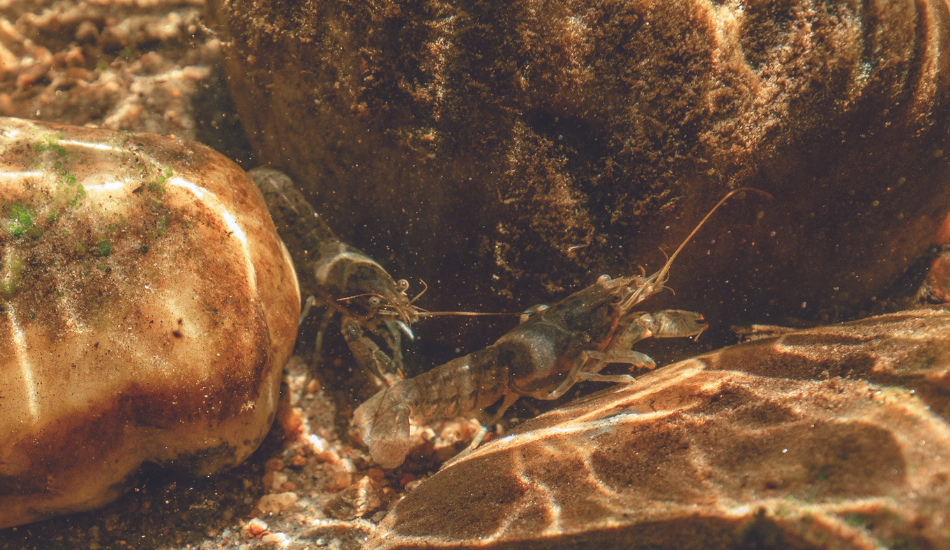
Mussels
There are around 700 species of freshwater mussels that live in North America, and Wyoming is home to seven of them. Though cutthroat trout do not often directly interact with mussels, the impacts mussels have on an ecosystem should not be overlooked. Trout and mussels share one of their food sources — zooplankton suspended in the water column. Mussels also consume a variety of other floating materials including phytoplankton, algae, detritus, bacteria and even sediment. Mussels act as the filters of aquatic ecosystems. Residing in the beds of water bodies, mussels capture nutrients from the water column and lock them in the substrate, a process that can also confine toxins and pollutants. Without their filtration, there would be fewer barriers to pathogens and sediment would fill streams and lakes.
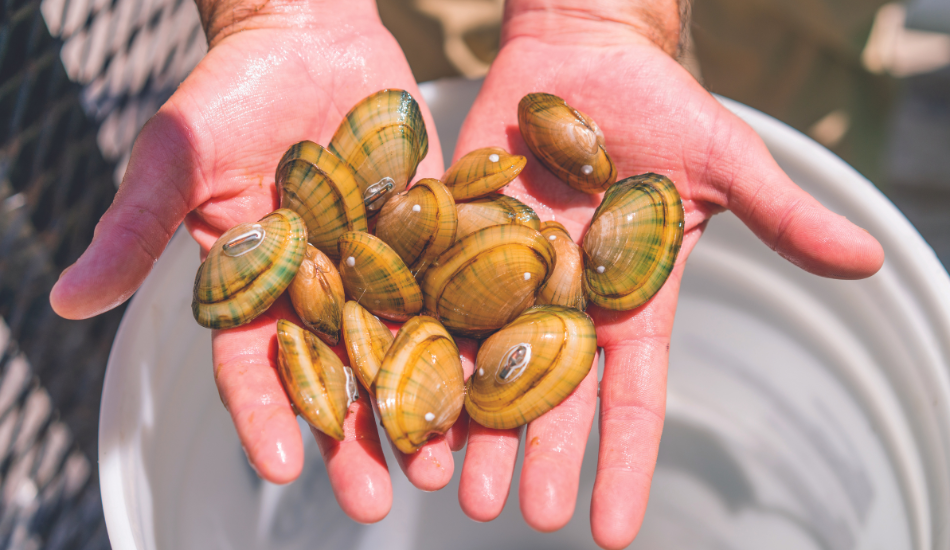
Suckers
While not generally a favored fish among anglers, suckers are a natural part of freshwater systems in Wyoming, which hosts eight native sucker species. These fish are often called bottom-feeders, referring to their diet coming from the substrate of a stream or lake rather than from the water column or surface. Regardless of stigma, these fish are pivotal in their habitat.
“Suckers play a crucial role in the ecosystem,” Miller said. “They pull things from the river bottom and move nutrients around in a different way than trout do. If there were no suckers there, the system would look very different.”
Nutrients in things like algae and organic debris called detritus, which trout do not eat, are resuspended into the water column through the behavior of suckers, which act like vacuum cleaners of a stream or lake. While other species have similar food sources, like mussels and crayfish, suckers consume larger food items and move previously settled nutrients back into the water column, redistributing them for other species and maintaining nutrient cycles. Biologists have found that if you have a cutthroat trout naturally in a system, suckers will most often be present as well.
All fish, even species that may not be coveted to catch or eat, are important to the survival of trout. Suckers contribute greatly to a well-rounded assemblage of fish that has evolved together, serving as a vital participant in freshwater webs.
Plants
Often overlooked, plants are crucial in aquatic ecosystems. Leafy plants and algae are included in the aquatic plant category. Algae includes phytoplankton, which are very small and float through the water column like zooplankton, and species that anchor to the substrate. Just like in terrestrial systems, plants are the lungs of aquatic ecosystems. Aquatic plants function similarly to landlocked plants — they serve as the base of the food web.
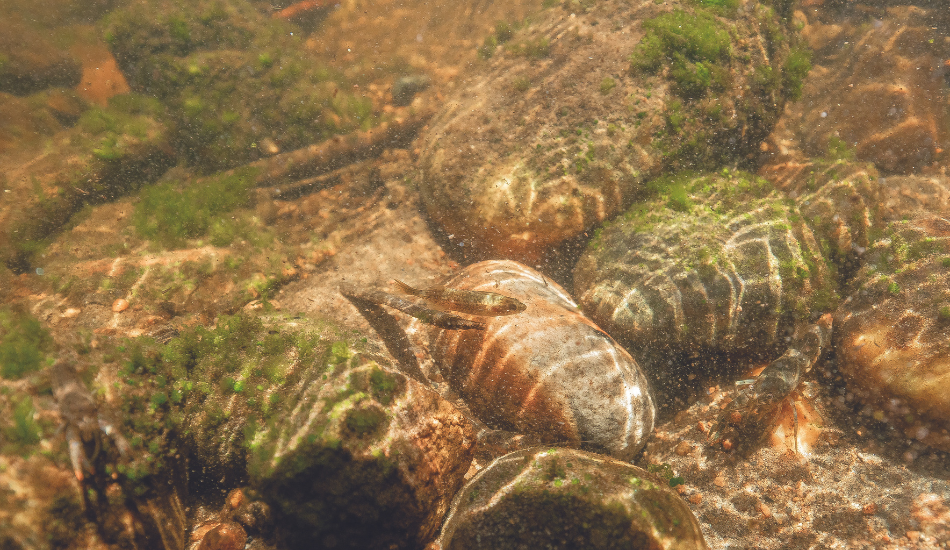
However, living completely or partially in water requires special adaptations. Even with the basic function of photosynthesis, aquatic plants face greater challenges than terrestrial plants as carbon dioxide is not as available in water as it is in air. Water also restricts light. Sunlight can only penetrate water to a certain depth, which can restrict the availability of the vital resource and the extent of habitat where plants can grow. Aquatic plants have adapted to form different cells than plants on land require, as the density of water generally supports their structure. Their reproductive strategies have also adapted differently than terrestrial plants.
For cutthroat trout, plants not only produce life-giving oxygen but also provide shelter for vulnerable trout in their early life stages.
“There’s a pretty strong relationship between aquatic vegetation and juvenile trout, or fry,” Miller said. “They often occur in slower water and provide cover for small fish. Younger fish utilize plants and algae much more heavily than adults. Adults want more cover and cooler water temperatures, so the shallower, warmer areas where plants grow isn’t as ideal for larger fish.”
Once trout become adults, plants also become a small part of their diet. As plants are a main food source and primary habitat for many aquatic insects, trout inadvertently consume plant fragments as they target the insects entwined within.
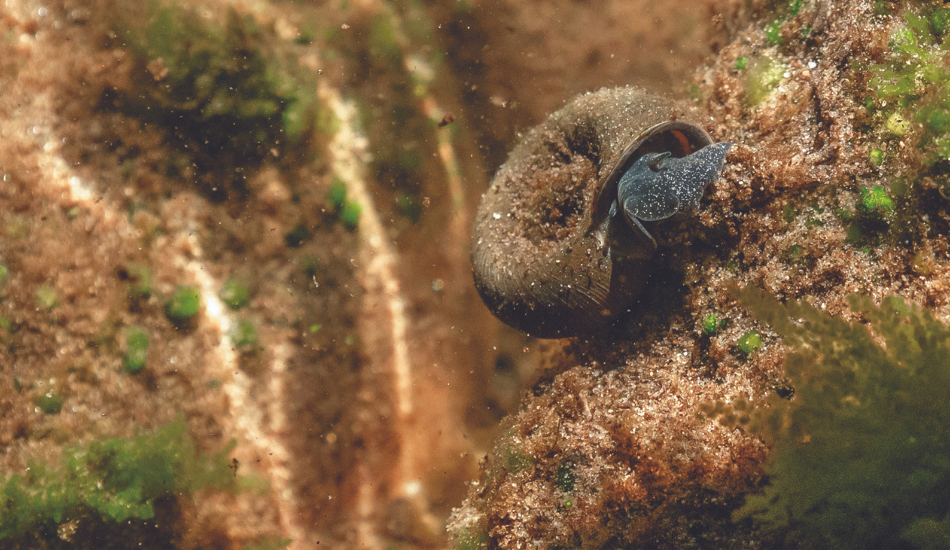
Plants have significant effects on water chemistry. An abundance of plants can supersaturate a waterbody with oxygen during the day as they create it through photosynthesis, an outcome that can be detrimental to fish. Plants also deplete the oxygen in a waterbody at night when they require the resource but are not able to produce it; in extreme cases, this can result in fish kills. Especially for species like trout, which require relatively high dissolved oxygen levels compared to many other fish, this dynamic can be dangerous. Especially during reproduction as trout eggs require freshwater with high oxygen levels to flow over them. Water with low oxygen can kill fish of any age. The balance of plant abundance in an aquatic system can spell life or death for a trout.
Ecological niches and requirements are fairly consistent across freshwater systems. Even in areas without cutthroat trout, regardless of exact species, similar plants and animals fill similar roles in streams and lakes across Wyoming. No matter how small or seemingly insignificant a plant or animal may be, each contributes to the overall health and function of the ecosystem. Everything is connected.
— Stephanie Estell is the statewide information specialist for the Wyoming Game and Fish Department

